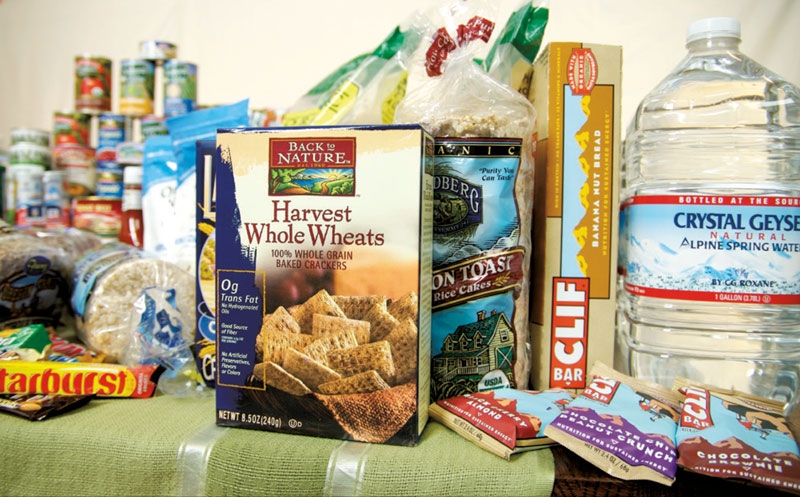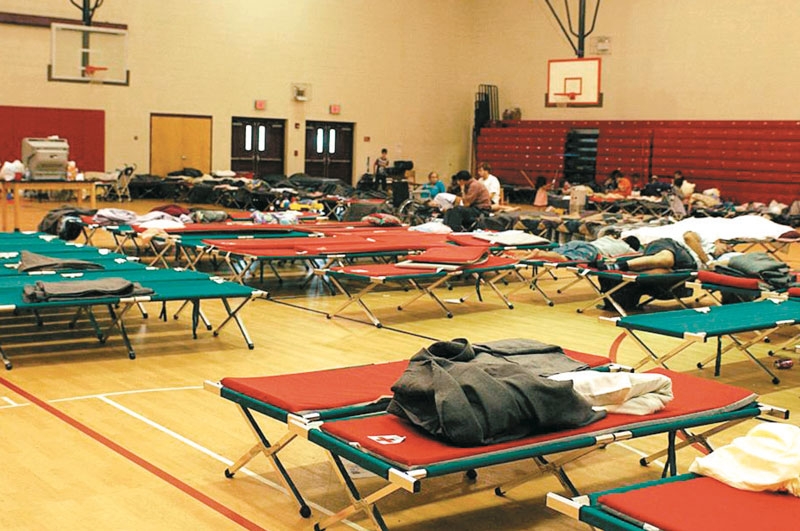Step 7: Reconnect and Restore
The first few hours and days after an earthquake or tsunami…
Once you have met your and your family’s immediate needs, continue to follow the plan you prepared in advance (see Step 2).
Tsunamis
Stay away from the coast until officials reopen the area for you to return.
- The first surge is almost never the largest. The largest waves may arrive hours after the first.
- Successive surges will arrive at irregular intervals spaced minutes to tens of minutes apart. The danger period may last 10 hours or longer.
- Never go to the coast to watch a tsunami. Tsunamis move faster than a person can run. Incoming traffic hampers safe and timely evacuation of coastal areas.
BE IN COMMUNICATION
Listen to your NOAA Weather Radio for updates on the hazard and for instructions on what to do.

Earthquakes
You may be safest staying in your home even if the power is off and some items have been damaged. Shelters may be overcrowded and initially lack many services. Use the information you put together in your disaster plan and the supplies you organized in your disaster kits.
- Do not use open flames (candles, matches, lighters or grills) or operate any device that could generate a spark such as light switches, generators, motor vehicles until you are sure there are no gas leaks.
- Never use a camp stove, gas lantern or heater, gas or charcoal grill, or gas generator indoors.
BE IN COMMUNICATION
- Use your portable, car, or NOAA Weather Radio for updates and safety advisories. Scan channels to find one that is on air and broadcasting safety information.
- Call your out-of-area contact and tell them your status, then stay off the phone. Emergency responders need the phone lines for life-saving communications.
- Check on the condition of your neighbors.
FOOD AND WATER
- If the power is off, plan meals to use up refrigerated and frozen foods first. With the door closed, food in the freezer may last several days.
- If your water is off or unsafe, you can drink from water heaters, melted ice cubes, or canned vegetables. Avoid drinking water from swimming pools or spas.
- Do not eat or drink anything from open containers that are near shattered glass.
The first weeks after the earthquake...
This is a time of transition. Aftershocks may continue for many months, but it is time to work toward getting your life, your home and family, and your routines back in order. Emotional care and recovery are just as important as healing physical injuries and rebuilding a home.
- Make sure your home is safe to occupy and not in danger of collapse in an aftershock.
- If your gas was turned off, you will need to arrange for the gas company to turn it back on.
- If the electricity went off and came back on, check your appliances and electronic equipment for damage.
- If water lines broke, look for water damage.
- Have a professional inspect your fireplace or wood burning stove before you use them after an earthquake. The damage may not be easy to see and could cause a chimney fire or poisonous gas release.
- Locate and/or replace critical documents that may have been misplaced, damaged or destroyed.
- Contact your insurance agent right away to begin your claims process. Take pictures of the damage both of your building and contents.

If you cannot stay in your home...
If your home is in a tsunami hazard zone, is structurally unsafe, or threatened by a fire or other hazard, you need to evacuate. If you evacuate, tell a neighbor and your out-of-area contact where you are going. Set up an alternative mailing address with the post office as soon as possible. Take the following, if possible, when you evacuate:
- Personal disaster supply kits
- Supply of food, water and snacks
- Blanket/pillow/air mattress or sleeping pad
- Change of clothing and a jacket
- Towel and washcloth
- Comfort items such as family pictures, games, books
- Personal identification and copies of household and health insurance information
- Special needs items such as medicines, eyewear, infant supplies (diapers, bottles, baby food), and supplies for elderly and disabled persons
Do not take to a shelter:
- Pets—have a plan for your pets in advance (service animals for people with disabilities are allowed but you must bring food for them)
- Large quantities of unnecessary clothing or other personal items—space is very limited
- Valuables that might be lost, stolen, or take up needed space
If a major disaster has been declared by the President, the Federal Emergency Management Agency (FEMA) may activate the Individuals and Households Program. This program may include home-repair cash grants, rental assistance and/or temporary housing.
Find out more by visiting fema.gov/assistance